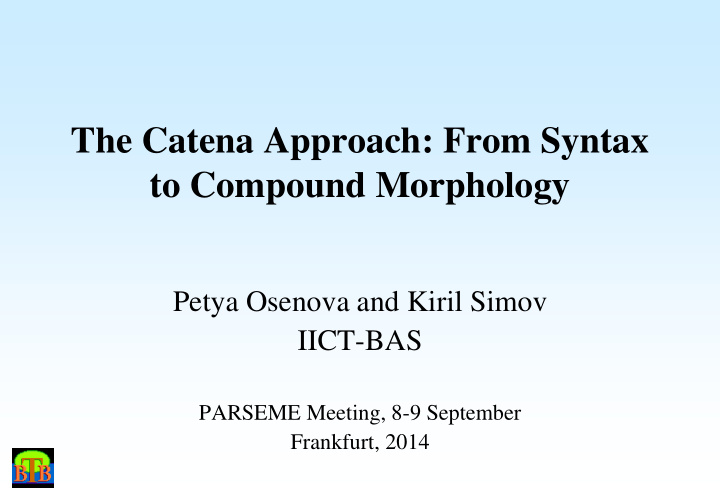



The Catena Approach: From Syntax to Compound Morphology Petya Osenova and Kiril Simov IICT-BAS PARSEME Meeting, 8-9 September Frankfurt, 2014
Compound Morphology: Examples • Deverbal nouns have only syntactic paraphrases: – �и����ече�ие (‘ herbcuring ’, curing bв herbs) – * �и����е�у��� (*‘herbcure.1PERS.SG’, to cure with herbs) and – �е�у��� � �и��и (‘cure.1PERS.SG аith herbs’, to cure аith herbs) • Deverbal nouns have also verb compound paraphrases: – �ъ����х��е (‘ handwaving ’, gesticulating), – �ъ����х�� (‘handаave.1PERS.SG’, gesticulate) and – ��х�� � �ъ�� (‘аave аith hand’, gesticulate).
Catena Record in Lexicon [ form : < �и����ече�ие > catena: (MorphVIObj-C (MorphIObj-C [1 ]�и�� -)(MorphV-C [2 ]�еч -) ) derivational catena: (VPC-C (V-C [2 ]�е�у��� (PP -C (P- C �) (N -C [1 ]�и��и) ) ) ) semantics: cure_rel(e,x,y,[4 ]�и��и) & nominal_rel(e) valency: < mod; (PP (P �) [ 4](NP ModB * (N �и��и) Mod A*)) : ModB* or ModA* is not empty > ]
Recommend
More recommend